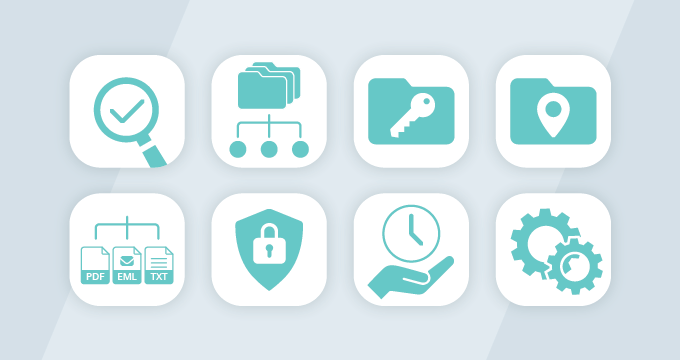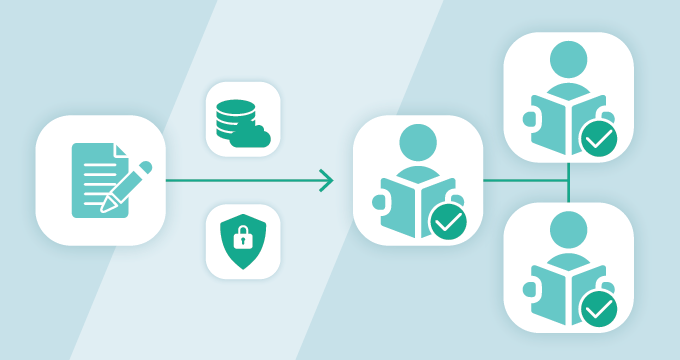Data inventory and mapping are key processes that help organize, secure, and leverage data effectively. These practices assist in compliance and risk management and in making informed strategic decisions.
This guide provides an in-depth look at data inventory and mapping, highlighting their significance, differences, and roles in enhancing business operations.
Understanding Data Inventory
Data inventory is cataloging all the data assets within an organization.
This provides a comprehensive view of:
- What data exists,
- Where it is stored, and
- How it is used within the business.
It’s a fundamental step for companies looking to understand their data ecosystem better.
Having a detailed inventory is crucial in an age where data breaches and compliance violations can lead to significant legal and financial repercussions. It gives companies a clear grasp of their data, and enables them to implement effective security measures and comply with data protection regulations like GDPR, HIPAA, or CCPA.
Key components of data inventory
Data inventory involves several key components that together provide a clear picture of an organization’s data landscape:
- Data identification — This involves recognizing and documenting all types of data that the organization handles. It ranges from customer information and employee records to financial data and intellectual property.
- Data classification —After identification, data is classified based on type, sensitivity, and importance. This classification helps determine the level of security and handling that each data type requires.
- Data location — It’s essential to document where each data set is stored. This can include various locations such as on-premises servers, cloud storage, or third-party databases.
- Data ownership — This aspect identifies who is responsible for each data type within the organization. Assigning ownership ensures accountability and proper data management.
- Data usage — Understanding how data is used in business operations is crucial. This involves tracking the flow of data, its purpose, and how it contributes to business processes.
- Data security and compliance — This involves documenting the security measures in place for each type of data and ensuring that these measures comply with relevant laws and regulations.
A data inventory offers a thorough understanding of an organization’s data assets through these components, setting the stage for effective management and compliance strategies.
Data Mapping: An Overview
While data inventory is about cataloging data, data mapping is about creating a roadmap of how data flows throughout an organization.
This process maps out the data journey from its origin to its various destinations and uses within the business. It’s like drawing a detailed map that shows where data is stored (like data inventory does) and how it travels and transforms along its life cycle within the company.
The process of data mapping
Data mapping involves the following steps:
- Identifying data sources — First, pinpoint where your data originates. This could be from internal systems like CRM software, external sources like social media platforms, or IoT devices.
- Data collection methods — Determine how data is collected from these sources. This may include automatic data syncing, manual entry, or data import processes.
- Mapping data flows — Chart the journey of data through the organization. This step involves tracing the path from source to destination, including any stops in between, such as databases, servers, or cloud storage.
- Transformation and utilization — Document how data is transformed along its journey — for example, how raw data is converted into analytics reports — and how it’s ultimately used for decision-making or other business processes.
- Ensuring compliance — It is important throughout this process to ensure that the data flow adheres to relevant data protection and privacy regulations.
How Data Inventory and Mapping Work Together
While inventory focuses on the what and where of data, mapping addresses the how and why — the ways data is processed, transferred, and utilized.
The inventory serves as a foundational layer that helps you understand what data exists and where it is stored. Data mapping builds upon this, offering insights into how this data moves and changes within the organization.
This interconnection can be thought of as the difference between having a comprehensive list of every book in a library (data inventory) and understanding the journey of a book from check-in to check-out, including every reader’s hands it passes through (data mapping). Together, they provide a complete picture of an organization’s data landscape.
Implementing Data Inventory and Mapping in Your Business
Here’s a checklist that you can follow to implement data inventory and mapping in your organization.
Best practices for effective data inventory
Implementing a robust data inventory starts with a structured approach:
- Start with a comprehensive audit — Begin by thoroughly auditing all data sources within your organization. This includes both digital data and physical records.
- Utilize data archiving software — Data archiving software can be vital in managing your data inventory. It helps store and categorize data systematically, making retrieval easier and ensuring long-term data preservation.
- Assign data stewards — Designate individuals or teams responsible for overseeing and accurately maintaining the data inventory. They will ensure that data is consistently cataloged and updated.
- Establish clear data policies — Develop clear policies for data management, including how new data is added to the inventory and how obsolete data is handled.
Strategies for successful data mapping
Effective data mapping requires a strategic approach:
- Define clear objectives — Understand what you aim to achieve with data mapping. This could be compliance, risk management, operational efficiency, or a combination.
- Map data flows visually — Use diagrams or data mapping tools to represent your data flows visually. This will make it easier to understand and communicate these flows within the organization.
- Regularly review and update maps — As with data inventory, data mapping should be a living process. Regular reviews and updates are necessary to account for changes in data processes and compliance requirements.
Tools and technologies to assist in the process
Several tools and technologies can help with data inventory and mapping:
- Data archiving solutions — These are crucial for both processes. Look for solutions that offer features like automated data categorization, easy search functionality, and compliance tracking.
- Data mapping software — Specialized software can simplify creating and maintaining data maps, providing templates and automation features to streamline the process.
- Data governance platforms — These platforms offer a suite of tools to manage data inventory, mapping, compliance, and security all in one place.
- Cloud storage systems — Cloud-based solutions can enhance data inventory management by offering scalable, secure, and accessible data storage options.
Summary of Key Points
Here’s a recap of everything you need to know:
- Data inventory and data mapping are two key processes that help companies organize, secure, and use data effectively.
- Data inventory refers to cataloging all the data assets within an organization. It involves having a clear idea of what data exists, where it is stored, and how it is used within the organization.
- Data mapping is a roadmap of how data moves and transforms along its life cycle within the company.
- To create a data inventory, you need to identify, classify, and know the location and ownership of data, as well as how it’s used and how it affects compliance.
- Data mapping involves the identification of data sources, mapping out the points of data collection and data flows, keeping track of how data changes in the process, and ensuring that, at every step, you adhere to the compliance standards.
- There are tools and technologies that can help with both data inventory and data mapping — data archiving solutions, cloud storage, governance platforms, and mapping software can all be helpful.
Jatheon’s cloud email archiving solution can help you capture data automatically, find important information, and manage your data with ease.
FAQ
What is the difference between data inventory and data mapping?
Data inventory is about cataloging data (what data you have and where it is stored), while data mapping details the flow and usage of data within the organization (how and why data is processed and transferred).
How often should businesses update their data inventory and mapping?
Regular updates are essential. Ideally, businesses should review and update their data inventory and mapping processes at least annually or whenever significant changes in data handling or business processes occur.
How do data inventory and mapping enhance data security and compliance?
By having a clear understanding and record of what data exists, where it is stored, and how it is used, businesses can implement more effective security measures and ensure compliance with relevant data protection laws.
Read Next:Document Retention Policy and Requests for Production |







